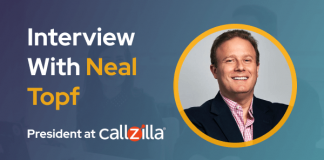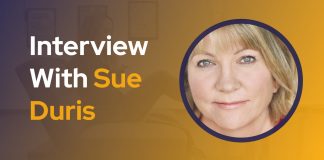Hi Amanda, tell us about yourself and your background.
Sorry, here’s the “LinkedIn” stuff: I’m an innovation leader who leverages human-centered design (HCD) and customer experience (CX) methodologies to foster cultures of innovation. As NuAxis’ Director of CX, I scale CX across the entire company to bring CX value to customers. Prior to my work NuAxis, I was the chief design officer at EthSynPro (ESP). I was also the founder and VP of Design of Cognosante’s HCD capability and was responsible for embedding HCD within the company’s R&D as well as customer-facing digital solutions. I was also a co-founder of the HCD capability at Booz Allen Hamilton.
Here’s the “me” stuff: I have always felt like a square peg in a round hole when my career in IT began. I never really “fit” with the absolutely amazing techies I worked with because I wasn’t overly preoccupied with how things worked on the backend of technological systems–my passion was always about the people who would use the technology and how the technology launched would impact them, as well as how that technology fit into the larger experience someone had within a service. When I discovered human-centered design (HCD) 13-ish years ago, it felt like a watershed moment to me. I finally realized that I wasn’t crazy—this is supposed to be how technology is designed for humans.
How did you start working in the customer experience space?
I was approached by one of my leaders at Booz Allen to apply to an internal investment to start HCD at the company. Along with 12 other colleagues, we founded the HCD capability. We took a 6-month, on-the-job training in HCD where we applied the concepts of HCD to a problem one of our Federal customers was facing. That was 13 years ago, and I have been pushing the concepts of CX, UX, and HCD on anyone who will listen ever since 🙂.
The biggest challenge was getting our company and customers to believe that this way of thinking and working—to put humans at the center of the technology we were designing for, and to consider the overarching experience they were having within a service—was a hard sell both internally and to the Federal government at first. But my biggest strength and weakness is that I will die on my sword for what I believe in—so we pushed and pushed until internal evangelists and early adopting customers gave us enough leverage to prove that using the concepts of CX and HCD were not only the right way to work for customers, but they also made a lot of business sense.
Can you tell us a little bit about your current role?
My team and I scale CX best practices, tools, frameworks, and innovations across a 500-person company and their customers. We expand CX principles and solutions to our Federal customers, including the Department of Labor, the Department of Interior, and the United States Department of Agriculture. We do this by training the whole company in CX, as well as provide them with the tools, resources and support they need to deliver CX to their customers.
How can companies better listen and understand their customer base?
It’s common sense uncommonly practiced–talk to your customers directly, one on one. I’m not talking about focus groups or surveys. I’m saying meet with your customer segments directly (preferably in person) and ask them about what’s working and what’s not. Go deep and dig for the underlying emotions. Once you uncover the emotional experience someone is having with your product or service, you can solve for the functional experience they’re having. That’s because understanding the things that bring customers deep pain or deep joy can help you address how they experience the functional aspects of your offering.
What are some companies that you think are doing an excellent job at customer experience, and why?
I feel like it’s almost too obvious to point out how American Express has been doing the most bang-up job at CX before it was really in the cultural lexicon. My family has belonged to AmEx for decades now because they seem obsessed with the customer’s experience. When you call the help desk, the technicians are empowered to make decisions that benefit you without having to run you through multiple tiers or get management approval. You can ask them to cancel payments, arrange travel, and make adjustments very easily through the app, or very simply and painlessly through their help desk. I can’t stress enough about how incredible they are to their customers.
Many companies are currently undergoing digital transformation processes – what are your tips on a successful digital transformation?
What I’ve noticed after nearly 14 years of supporting digital transformation for the government is that silos are almost inevitable because of the size of each agency (this is very true of large companies, too). It’s really, really challenging to look over the tech stack of an enterprise and see how each system is or is not affecting other systems, where the manual workarounds are, and how the inefficiencies and incongruencies of the systems affect both the employee and customer experiences. People also underestimate how making a change in one system may impact 15 other systems from a technology point of view.
It’s all incredibly complex, and that’s why deconstructing that complexity with HCD and CX tools is essential. Creating a map of how technologies impact each other is one thing, but also mapping out the employee and customer experience with these systems helps determine how to configure systems in a way that not only improves those experiences, but ensures adoption of the digital transformation. Getting adoption means not having to do the work twice, and that ensures cost savings for the government and taxpayers.
What are some CX solutions or tools that you’re keeping your eyes on right now?
Medallia, Medallia, Medallia! I’ve worked with them on quite a few efforts now, and I honestly cannot say enough good things about both their platform and its ease of use, as well as the people running the company. They live and breathe CX at the most fundamental levels (from the CEO down), and I think you can see it in their product. They are honestly my CX heroes.
Did you read any interesting books this past summer that you’d like to recommend?
I read Jobs to Be Done (it was published by the Rosenfeld group) and honestly, I love the alternate framework it offers for enabling CX. Like most Rosenfeld books, it’s pretty easy to digest and has a lot of actionable recommendations.
What is your favorite CX metric?
Frankly, I love looking at hidden behavioral metrics. Yes, surveys give you that really important snapshot of a moment in time, but I think the real juice is when you can pair that aggregated survey data with metrics on how humans are behaving as they interact with touchpoints in a system. What’s their dwell time at a given point in a system? When do they abandon or persist with the touch point? What’s the rate of use for a given touchpoint vs. another? I think all of these hidden metrics help to paint a fuller picture of the experience someone is having within a system or service.






